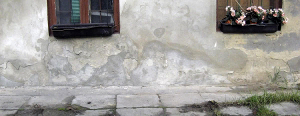
How to get rid of moisture in your home
Moisture in the air or walls is a serious problem that requires intervention due to the threat not only to the facility, but above all to the residents. Check how to get rid of moisture from a room and what determines the optimal method.
Moisture in the house – what to do?
Unfortunately, the answer to the question of how to get rid of moisture from a room is not clear. This is because when it comes to moisture in a building, our actions should depend on the source of the problem. Only then it is possible to eliminate the cause and achieve a lasting result. The most common causes of moisture in an apartment or house include:
- flooding due to flood,
- flooding due to failure of the water installation,
- leaking water installation,
- building leaks,
- improper ventilation,
- cooling of rooms,
- capillary action.
How to remove moisture from a room – basic actions
In most cases, it is necessary to implement a few basic actions, which sometimes solve the problem in its entirety, and in other cases are part of a larger strategy. This mainly concerns the use of fans, heaters and moisture absorbers. This is equipment that restores proper air circulation, heats it and gets rid of excess water vapor suspended in it. However, if the cause of the problem is, for example, capillary rising or a building leak, none of these actions will answer the question of how to remove moisture in the house so that it does not return.
Renovation works – how to combat moisture in the apartment once and for all
In some cases, the only answer to the question of how to remove moisture from a room is to renovate it. The damaged water installation needs to be replaced, and the malfunctioning ventilation system needs to be repaired. A way to remove moisture in the apartment may also be to seal windows, doors or roofs if the problem is caused by the penetration of humid air or water itself. Also in the case of capillary rising, it may be necessary to carry out some kind of renovation. However, the issue of how to remove moisture from the basement or walls in the upper floors of the building, the presence of which is caused by capillary rising, will be explored further in the article.
How to remove moisture from the basement after flooding?
When moisture appears in a facility, how to get rid of the problem is often a question that is difficult to answer due to the difficulty in determining the source of the problem. In the case of basement flooding, the source is rather well known, but the solution is not at all simple. In the event of significant flooding, it may be necessary to use a pump to remove the water. Heaters and dehumidifiers are then introduced to dry the surface. It may also be necessary to use specialized dehumidifiers that reach into the cracks in the floors to eliminate the moisture remaining there and prevent the growth of mold.
Moisture in the walls – how to get rid of it when the source is capillary rising
Another argument for why there is moisture in the apartment may be its cooling down. The lower the room temperature, the higher the relative humidity. Some of the water molecules suspended in the air settle on walls or furniture. Why is there moisture in the house – the importance of the answer for choosing the type of intervention. Finally, we move on to the issue of how to remove moisture from walls if it remains in the walls due to capillary action. Let’s start by explaining the specifics of this phenomenon. This is about pulling water molecules through microchannels to areas with lower humidity, often even to the first floor of the building. This happens when the waterproofing is not completely tight and there is a high level of groundwater around the building. But how to remove moisture caused by capillary action?
The most common method of drying is by cutting. This involves professionals making a horizontal cut in the walls and then inserting an insulating board made of durable plastic into the gap. Later, wedges are placed on the slab to prevent the building from settling. The insulation made this way prevents capillary rise for up to 100 years.
Moisture in the house and how to get rid of this problem – this is a question asked by everyone who encounters this problem. It is worth remembering that the final results depend on adapting the method to the specificity of the problem, and above all its source. Therefore, it is best to leave the issue of identifying the cause and choosing a way to get rid of moisture from the room or walls in the hands of professionals.
